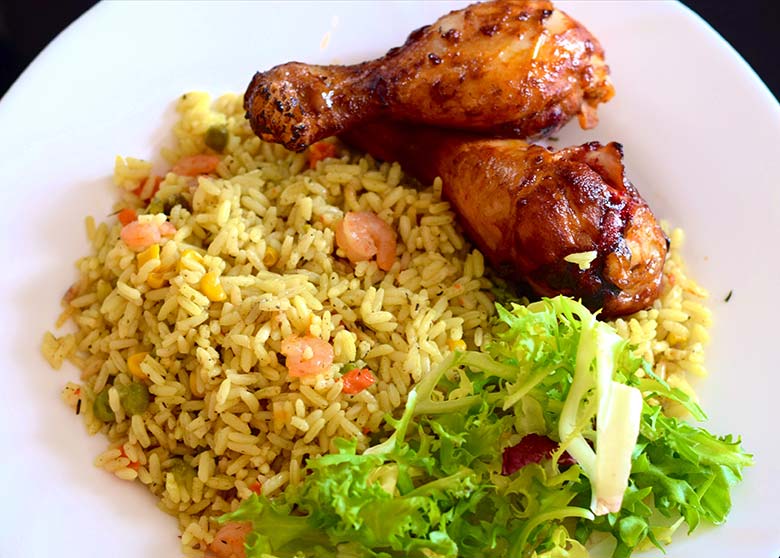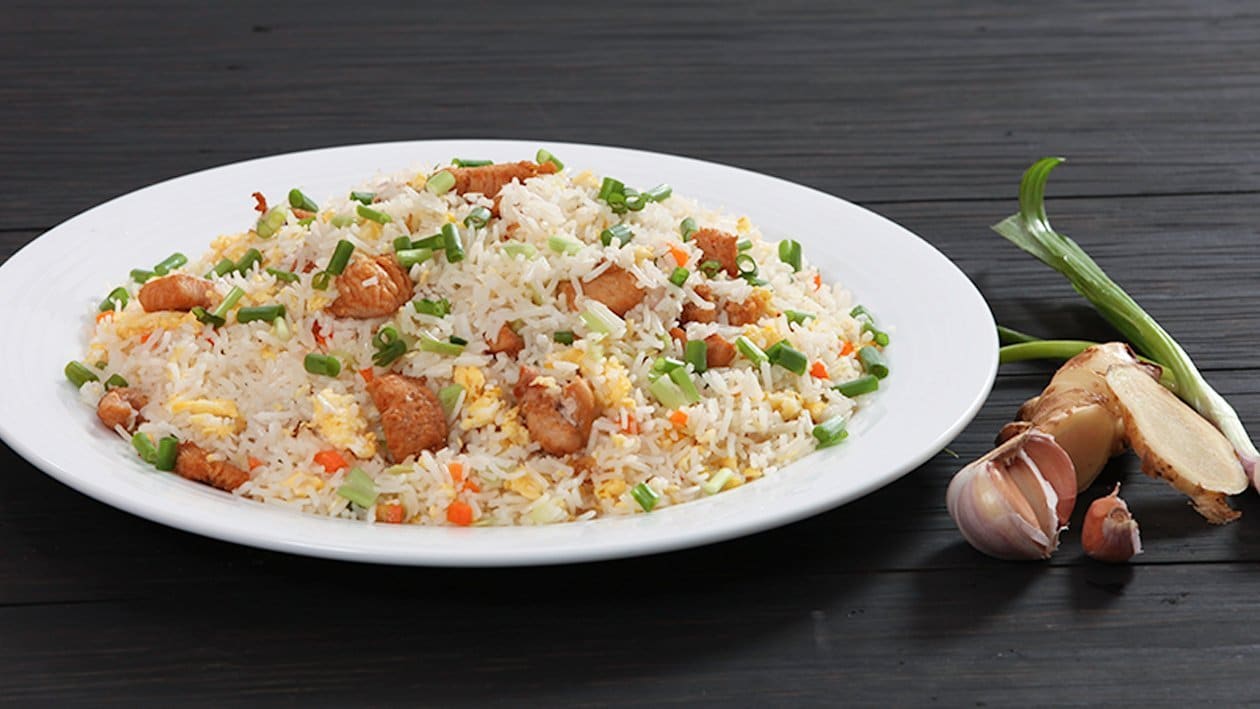Sri Lankan fried rice is a vibrant and flavorful dish that has become a staple in Sri Lankan cuisine. It is a delectable blend of fragrant rice, aromatic spices, and a variety of vegetables, making it a symphony of flavors that will tantalize your taste buds.
This beloved dish is not only a culinary delight but also holds cultural significance, gracing tables at festivals, gatherings, and everyday meals. Its versatility allows for endless variations, ensuring that each bite is a unique and satisfying experience.
Introduction
Sri Lankan fried rice, a vibrant and flavorful dish, holds a cherished place in the culinary tapestry of Sri Lanka. Its popularity transcends all boundaries, enjoyed by locals and visitors alike as a staple food and a culinary delight.
The significance of Sri Lankan fried rice extends beyond its taste. It embodies the rich cultural heritage and culinary traditions of the island nation. With its aromatic spices, vibrant colors, and diverse ingredients, this dish reflects the vibrant essence of Sri Lankan cuisine.
Ingredients

Sri Lankan fried rice, a vibrant and flavorful dish, is characterized by its use of aromatic spices and a medley of fresh ingredients. The essential components that contribute to its unique taste profile include:
- Rice: The foundation of the dish, traditionally using basmati or samba rice, which are known for their long, slender grains and fluffy texture.
- Spices: A blend of fragrant spices forms the backbone of the dish, including cumin, coriander, turmeric, curry powder, and mustard seeds. These spices impart a warm and earthy flavor.
- Vegetables: A colorful array of vegetables adds texture and nutrition, such as carrots, green beans, bell peppers, and onions. They provide a delightful crunch and freshness.
- Protein: Often incorporating chicken, beef, shrimp, or tofu, protein adds a savory element to the dish. These ingredients contribute richness and substance.
- Eggs: Scrambled or fried eggs are a common addition, providing a fluffy texture and additional protein.
- Coconut milk: A splash of coconut milk adds a subtle sweetness and creaminess, balancing the spicy flavors.
Cooking s
Sri Lankan fried rice is a flavorful and satisfying dish that can be easily prepared at home. Follow these step-by-step s to create a delicious and authentic version of this classic Sri Lankan dish.
Begin by gathering all the necessary ingredients, including cooked rice, vegetables, spices, and seasonings. It is important to use high-quality ingredients for the best flavor and texture.
Techniques
- Use a large wok or skillet: This will allow you to cook the rice and vegetables evenly and prevent them from sticking.
- Heat the oil over medium-high heat: This will help to create a crispy texture on the rice.
- Add the vegetables and cook until tender: Stir-frying the vegetables will enhance their flavor and color.
- Add the cooked rice and stir to combine: Use a spatula to gently mix the rice with the vegetables.
- Season with spices and seasonings: Add the desired spices and seasonings to taste.
- Cook until the rice is heated through: Stir-fry the rice for a few minutes until it is heated through and slightly browned.
Timing
- Cooking the vegetables: This will take approximately 5-7 minutes, depending on the type of vegetables used.
- Cooking the rice: Stir-frying the rice with the vegetables will take an additional 3-5 minutes.
4. Variations
Sri Lankan fried rice is a versatile dish that can be customized to suit various preferences and dietary restrictions. The following are some common variations:
Vegetarian Fried Rice: This variation omits meat and seafood, relying on vegetables such as carrots, green beans, and onions for flavor and texture.
Egg Fried Rice: This variation incorporates scrambled eggs into the dish, adding protein and a fluffy texture.
Spicy Fried Rice: This variation includes chili peppers or chili paste to add heat to the dish.
Dried Seafood
Dried seafood is a popular addition to Sri Lankan fried rice, adding a unique flavor and texture to the dish. Common types of dried seafood used include cuttlefish, shrimp, and sprats.
Cooking Methods
The cooking method can also affect the taste and texture of Sri Lankan fried rice. Traditional methods involve using a wok or large skillet over high heat, ensuring the rice remains separate and flavorful.
Pan Frying: This method involves cooking the rice in a pan with a small amount of oil, resulting in a crispy texture.
Stir Frying: This method involves constantly stirring the rice in a hot wok or skillet, resulting in a more even cooking and fluffy texture.
Serving Suggestions
Sri Lankan fried rice is a versatile dish that can be served in various ways.Traditionally, it is served as a main course with a side of a spicy curry or chutney. However, it can also be enjoyed as a side dish or as part of a larger meal.
Accompaniments and Garnishes
To enhance the flavors of Sri Lankan fried rice, consider serving it with the following accompaniments and garnishes:
Coconut sambal
This spicy condiment adds a burst of flavor to the rice.
Fried shallots
These crispy shallots add a crunchy texture and a slightly sweet flavor.
Hard-boiled eggs
Sliced hard-boiled eggs provide a protein boost and a touch of color.
Lime wedges
A squeeze of lime juice adds a refreshing acidity to the dish.
Fresh cilantro
Cilantro leaves add a herbaceous freshness to the rice.
Cultural Significance

Sri Lankan fried rice holds a significant place in the country’s culinary and cultural landscape. It is a staple dish enjoyed by people from all walks of life, and its presence adds a festive touch to various occasions.During festivals and special gatherings, Sri Lankan fried rice is often served as a centerpiece dish.
Its vibrant colors and aromatic flavors symbolize joy and celebration, making it an integral part of festive meals. Whether it’s a family reunion during the Sinhalese New Year or a traditional wedding reception, fried rice is a beloved dish that brings people together and fosters a sense of community.In
daily life, Sri Lankan fried rice is a convenient and satisfying meal option. Its versatility allows it to be customized with different ingredients, making it a perfect choice for home cooks who want to cater to various tastes and preferences.
Whether it’s a quick weekday dinner or a leisurely weekend brunch, fried rice is a dish that brings comfort and nourishment to Sri Lankan households.
The cultural significance of Sri Lankan fried rice is further enhanced by its association with specific regions and communities. In the coastal areas of the country, for example, seafood-based fried rice is a popular delicacy, reflecting the region’s rich fishing heritage.
Similarly, in the hill country, fried rice is often prepared with local vegetables and spices, giving it a unique flavor profile that reflects the region’s distinct culinary traditions.
Final Conclusion
In conclusion, Sri Lankan fried rice is a culinary treasure that embodies the vibrant spirit of Sri Lanka. Its tantalizing flavors, cultural significance, and endless variations make it a dish that will continue to captivate and delight food enthusiasts for generations to come.
Questions and Answers
What is the key ingredient that gives Sri Lankan fried rice its distinctive flavor?
The secret ingredient that elevates Sri Lankan fried rice is the use of a unique blend of spices known as “curry powder.” This aromatic mixture imparts a depth of flavor that sets this dish apart.
Is Sri Lankan fried rice a spicy dish?
The level of spiciness in Sri Lankan fried rice can vary depending on personal preferences. However, it is typically prepared with a moderate level of heat, allowing the flavors of the spices to shine through without overpowering the dish.
Can I use any type of rice for Sri Lankan fried rice?
For an authentic Sri Lankan fried rice experience, it is recommended to use Basmati rice or Samba rice. These varieties have a delicate texture and distinct flavor that complement the spices and vegetables.
